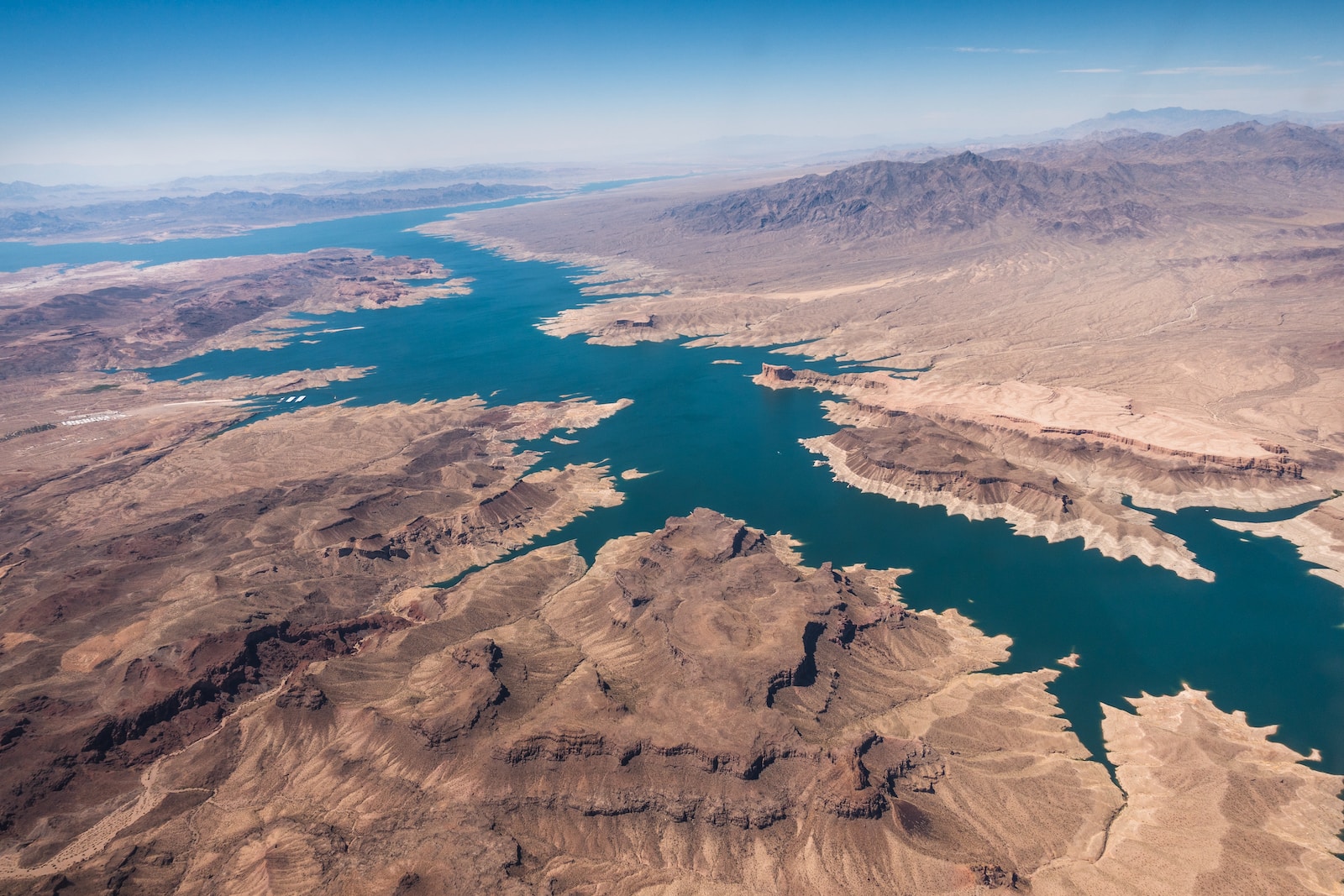Table of Contents
ToggleIntroduction
Lake Mead and Lake Powell are the two largest reservoirs in the United States. They store water from the Colorado River, which supplies water to 40 million people and 5.5 million acres of farmland in seven states and Mexico.
But these reservoirs are running low. They are at their lowest levels since they were filled in the 1930s and 1960s, respectively. The U.S. Bureau of Reclamation has declared a water shortage for the first time ever, triggering mandatory cuts in water deliveries for some states next year.
Why are Lake Mead and Lake Powell shrinking? What are the consequences of their low water levels? And what can you do to help save water? Here are some answers to these questions.
Why are Lake Mead and Lake Powell shrinking?
The main reason why Lake Mead and Lake Powell are shrinking is drought. The Colorado River Basin has experienced a prolonged drought since 2000, which has reduced the amount of snowpack and runoff that feeds the river and its reservoirs.
Another reason is climate change. Higher temperatures have increased evaporation from the reservoirs and the river, as well as increased water demand from plants and people. Climate change has also altered the precipitation patterns, making them more variable and unpredictable.
A third reason is overallocation. The Colorado River was divided among the states and Mexico based on historical flows that were higher than the current flows. This means that more water has been promised than is available, creating a structural deficit that worsens the situation.
How have Lake Mead and Lake Powell’s water levels changed over time?
Lake Mead and Lake Powell’s water levels have fluctuated over time, depending on the inflows and outflows of water. Here are some charts that show how their water levels have changed over time.
Lake Mead Water Level
Lake Mead water level today is 1,067.48 feet above sea level, which is 157.52 feet below full pool of 1,225.00 feet. The water level has dropped 0.11 feet in the past 24 hours and 14.76 feet in the past year. The current water level is 34.9% of Lake Mead’s total capacity of 28,537,000 acre-feet. The water level is expected to decline further in the coming months due to drought and high demand.

Lake Powell Water Level
Lake Powell water level today is 3,554.23 feet above sea level, which is 145.77 feet below full pool of 3,700.00 feet. The water level has dropped 0.06 feet in the past 24 hours and 51.63 feet in the past year. The current water level is 31.6% of Lake Powell’s total capacity of 24,322,000 acre-feet. The water level is expected to decline further in the coming months due to drought and low inflow.

If we observe the combined storage of Lake Mead and Lake Powell from 1963 to 2021, it shows that the combined storage reached its peak in 1999, at 96% of capacity, and its lowest point in July 2021, at 34% of capacity.
What are the consequences of low water levels in Lake Mead and Lake Powell?
Low water levels in Lake Mead and Lake Powell have serious consequences for people, wildlife, and the environment. Some of these consequences include:
- Reduced water supply for cities, farms, industries, tribes, and recreation. The lower the water levels, the less water is available for various uses. Some states, such as Arizona, Nevada, and Mexico, will face mandatory cuts in their water allocations next year. Other states, such as California, Utah, Colorado, New Mexico, and Wyoming, may face voluntary or involuntary cuts in the future if the situation worsens.
- Increased risk of power outages. The lower the water levels, the less hydropower is generated by the Hoover Dam and Glen Canyon Dam, which provide electricity to millions of people in the Southwest. If the water levels drop below certain thresholds, the dams may stop producing power altogether.
- Increased risk of environmental damage. The lower the water levels, the less water flows downstream to support ecosystems along the river and its tributaries. This can affect fish populations, wildlife habitats, wetlands, riparian areas, and endangered species.
- Increased risk of social conflict. The lower the water levels, the more competition and tension among different water users and stakeholders. This can lead to legal disputes, political battles, economic losses, and social unrest.
What can you do to help save water?
You can help save water by reducing your water consumption and increasing your water efficiency. Here are some tips on how to do that:
- Check your faucets, pipes, toilets, showers, appliances, sprinklers, and hoses for leaks and fix them as soon as possible. A single leak can waste hundreds of gallons of water per year.
- Install low-flow showerheads, faucet aerators, and toilet flappers to reduce the amount of water you use in the bathroom. You can also take shorter showers, turn off the faucet while brushing your teeth or shaving, and flush the toilet only when necessary.
- Use energy-efficient appliances, such as dishwashers and washing machines, that use less water and electricity. You can also run them only when they are full, use the shortest cycle possible, and avoid using the pre-rinse option.
- Water your lawn and garden only when they need it, preferably in the early morning or evening to avoid evaporation. You can also use drip irrigation systems, rain barrels, mulch, native plants, and xeriscaping to reduce your outdoor water use.
- Wash your car less often and use a bucket and sponge instead of a hose. You can also use a commercial car wash that recycles water.
- Educate yourself and others about the water crisis and the importance of water conservation. You can also support policies and programs that promote sustainable water management and protect the Colorado River Basin.
By following these tips, you can help save water and make a difference for yourself and future generations. Remember that every drop counts!







